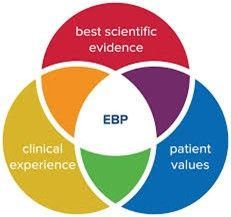DSM 5 Diagnosis Training: Chicken or Egg?
If your agency trains your staff about DSM 5 diagnosis, one key point for them is the old question. Which comes first the chicken or the egg? Clients present with multiple problems, behaviors, and symptoms. The clinician must first take the information down about the length of these problems and how long they have experienced them. Then the client describes how frequently the symptoms occur, whether daily, weekly or occasionally. The intensity of the symptoms differentiates between whether the condition is mild, moderate, or severe. The clinician then determines whether the condition is affecting the client’s functioning. Does it affect their ability to work, go to school, be at home, or live in the community?
Then the question is what is the DSM 5 diagnosis? Out of all the behaviors, history, and conditions the client presents, how does the clinician make a decision? It’s not easy, since clients with a long history of problems present with an array of choices. One approach is to rule out possible diagnoses. This can be done by looking at all possibilities and then figuring out which doesn’t fit with the symptoms.
Then the next approach is to use differential diagnoses. These choices are listed in the DSM 5 diagnosis Manual for a specific condition. For example, with attention deficit disorder (ADD), other possibilities are oppositional defiant disorder (ODD), intellectual disability (ID), or autism spectrum disorder (ASD). Then the manual will discuss how the other conditions are characterized and differ from the selected one. In the case of ADD, it is an issue of organization vs. hostility (ODD), reduced cognition (ID), or social disengagement (ASD).
But how do the chicken and egg come in? Because a major characteristic of diagnosis is what generates the maladaptive behavior. What is the origin of the condition? For example, a client presents with anxiety, due to a traumatic event. The client experiences flashbacks of the event. Is it anxiety or post-traumatic stress disorder (PTSD))? Most probably PTSD, because the anxiety comes from the trauma. In the DSM 5 differential diagnosis, the manual would also examine the cause or source of the problem.
Suppose an adult client tells the clinician they have a long history of depression and anxiety. They explain they also have delusions and hallucinations, worry about people harming them, and have difficulty concentrating. From this brief description, the client could have four diagnoses; major depressive disorder, bipolar disorder, generalized anxiety disorder, or schizophrenia, not to mention others. The clinician must uncover the origin of the discomfort. Is it from moods, thoughts, or both? What do delusions and hallucinations look like? If the client is driven by their moods and thoughts, a DSM 5 diagnosis of schizoaffective disorder may cover most of the symptoms.
The clinician in doing their DSM 5 diagnosis must take out extraneous information and boil all symptoms down to a simple question: what problem or chicken/egg came first?
Praxes provides training on Diagnosis for behavioral health agencies. For more information, please contact us.




